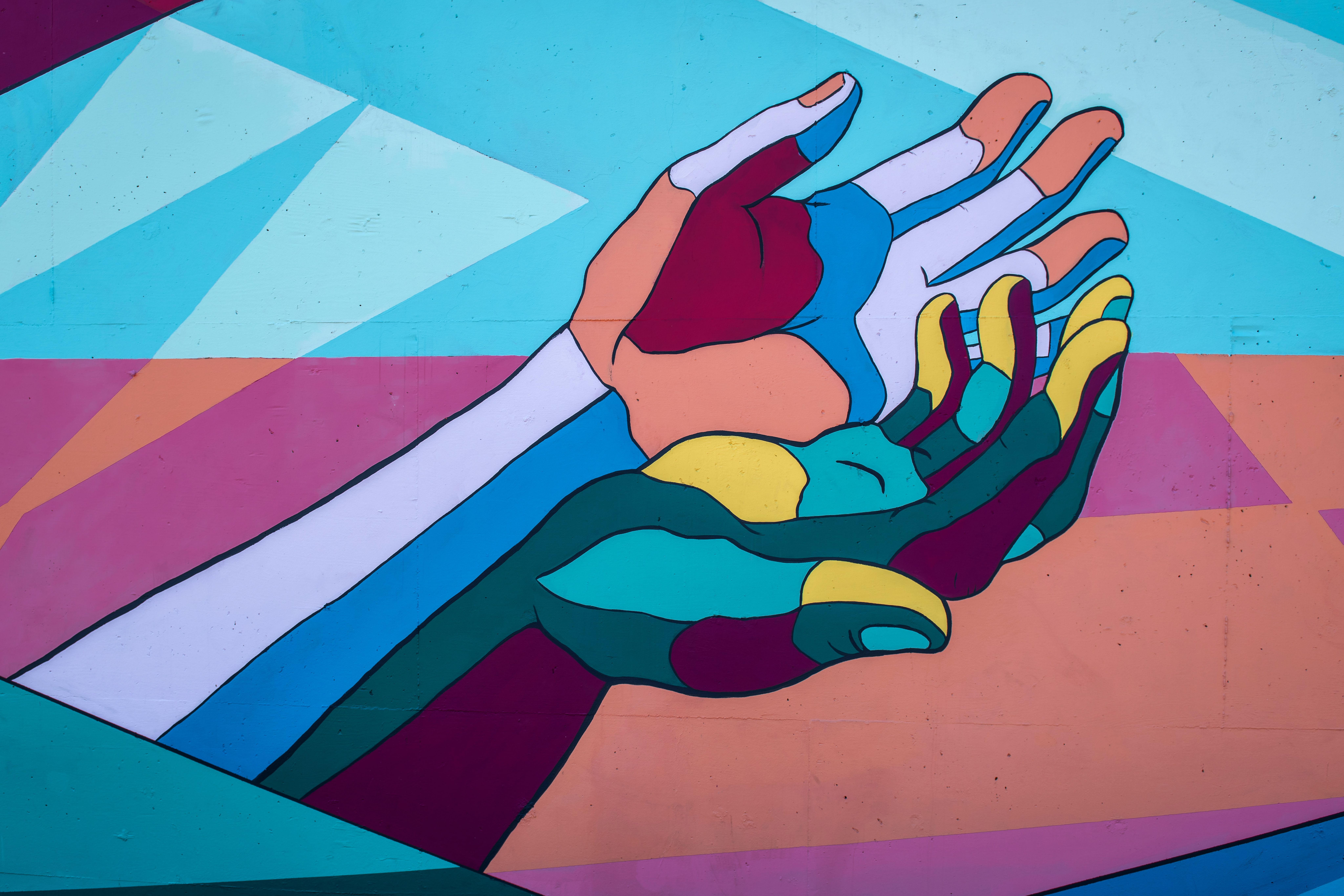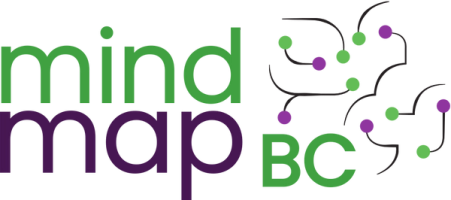
Beyond Counselling: Community and Culture as Healing
Jessy Dame, Harlan Pruden, and Travis Salway, on behalf of the Two-Spirit Dry Lab
January 20, 2021 • 5 Min Read
Many of the services listed on MindMap focus on counselling or ‘talk therapy’ approaches. While some of us will see improvement in our mental wellbeing after accessing professional counselling services, there are a range of other practices and supports that will appeal to others of us. Below, we draw on teachings from peoples indigenous to Turtle Island1 to offer suggestions for Indigenous2 and non-Indigenous people to consider how (re-)connecting with community and/or culture may be its own form of medicine.
Indigenous scholar and psychologist Joseph Gone, of the Aaniiih-Gros Ventre tribal Nation, has explained that for Indigenous people, access to cultural traditions is part of the process of restoring balance and connection, and therefore fundamental to a sense of mental and overall wellness.
“Indigenous healing is a term that is often opposed to something like treatment. One must recognize that Indigenous communities, prior to the arrival of biomedicine, had doctoring practices. Today, in Indigenous communities, what we talk about as an alternative to mental health discourse is transformative healing, which is more about transforming the self into what is more conducive to well-being. This is more of a process. In Indian Country, it’s about spirituality, and ceremonial participation, and many people advocate for it: Indigenous ceremony, ceremonial participation, sweat lodge ceremony, Sundance ceremonies, etc.
Anytime one participates in a ceremony, which involves prayer and sacrifice, it benefits them in ways that are conducive to health. In this way, prayer is health-inducing and might be conducive to recovery from problems, including mental health problems. One can be skeptical about this, as scientists often are, but it is very difficult to design the kinds of studies to test this. What we do have are thousands and thousands of Indian people who will attest to the fact that they’ve contended with these serious issues and been helped by culture and tradition, even those whose problems were quite severe.” 3
Culture as Healing (prevention, care & treatment)
Whether Indigenous or not, you have a culture. Culture includes the history of your people—your ancestors—as well as expressions of that history—things like art, dance, music, cooking, language, norms, values, food, and other forms of gatherings. Consider, for example, the culture camps and canoe journeys organized by Carrier Sekani Family Services in Northern BC4. With support from elders and knowledge keepers, these outings enable youth to connect with traditions of hunting, fishing, and berry gathering that is rooted in ceremony. Participants in these activities gain a sense of connection to their Indigenous identities and belongingness to a powerful pre-colonial past.
Other examples of culture as healing are provided by the Thunderbird Partnership Foundation’s addiction and mental health framework. They offer several concepts that are central to Indigenous approaches to cultural healing5 including:
- Language: “The “voice” of...culture and therefore the true and most expressive means.”
- The Spirit: ”Is in all things and throughout all things.”
- Earth connection: ”We are all relatives because we have the same Mother.”
- Harmony and balance: ”All of life consciously cares for one another, and…. strives to achieve and maintain an interrelationship that assures quality of life.”
We welcome your suggestions as we continue to integrate cultural healing resources into MindMap. In the meantime, please consider accessing elder counselling, e.g., through your local Friendship centre: https://frafca.org/prgrm_svc/traditional-elder-counselling/default.htm
Community as Healing
As with culture, community-based healing means building connections beyond ourselves, which in turn allows us to resist a sense of loneliness or purposelessness when we are feeling unwell. Below, we highlight a few Indigenous, Two-Spirit and queer-focused listings in MindMap that may appeal to those of you looking to connect with communities, in various forms.
Indigenous:
- Metro Vancouver Indigenous Services Society: http://www.mviss.ca/#our-services
- Urban Native Youth Association: https://unya.bc.ca/programs/#personal
- Pathways Aboriginal Centre: https://www.mindmapbc.ca/services/pathways-aboriginal-centre/
Two-Spirit:
- Nanki Nezulne (Our Two Spirits): https://www.csfs.org/services/lgbtq2
- Two-Spirit Longhouse, CBRC: https://www.cbrc.net/two-spirit_longhouse
- 2 Spirits of BC: https://2spiritsbc.com/
- Four Feathers Society: https://fourfeathers.net/
- Greater Vancouver Native Cultural Society - Two-Spirit: https://www.facebook.com/gvncs78/
- Coast Salish Two-Spirit Collective: https://www.facebook.com/UNYA2Spirit/posts/319793182000234
Queer (Indigenous inclusive):
- Broadway Youth Resource Centre: https://www.mindmapbc.ca/services/broadway-youth-resource-centre/
- Friends of Dorothy (Langley): https://www.mindmapbc.ca/services/friends-of-dorothy-langley/
Two-Spirit as Healing
Many Indigenous people have experienced and continue to experience the power and affirmation of connecting with Two-Spirit. Here is a description of Jessy’s feelings the first time he heard the term Two-Spirit:
“I was 19 years old, always knowing I was gay and proud of my Métis heritage, but very much on the path of reclaiming what had been lost through years of family trauma and forced assimilation. On a very memorable day for me, I was able to sit down and talk with a Métis elder. Prior to this I had never met a Métis elder nor known of the validation that would come with this interaction.
During our many discussions she spoke to being Two-Spirit and the historical pride that our communities had with having a member who was Two-Spirit. The magic that came with a concept that was inclusive of many things. It was at that moment I felt a connection, a weight lift off of my shoulders, and I realized something that I will hold with me for the rest of my life.... That for the first time I experienced how culture and reclaiming my own culture heals.”
Additional resources
- Two-Spirit Resource Directory
- A resource for our Two-Spirit women: Two-Spirit Resource of and for Two-Spirit Women
References
1. https://www.thecanadianencyclopedia.ca/en/article/turtle-island
2. The terms Indigenous and Indigenous peoples are used to represent all First Nations, Inuit and Métis peoples inclusively. The terms Aboriginal, Aboriginal peoples, Native, Native peoples and Indian are used when reflected in the literature being discussed. Wherever possible, we use culturally specific names.
4. https://wisepractices.ca/practices/carrier-sekani-family-services/
5. https://thunderbirdpf.org/wp-content/uploads/2015/07/2_Definition_of_Culture.pdf
← Previous Article
Mapping out Remote Mental Health Services: What to ExpectNext Article →
Navigating a Map of Choices